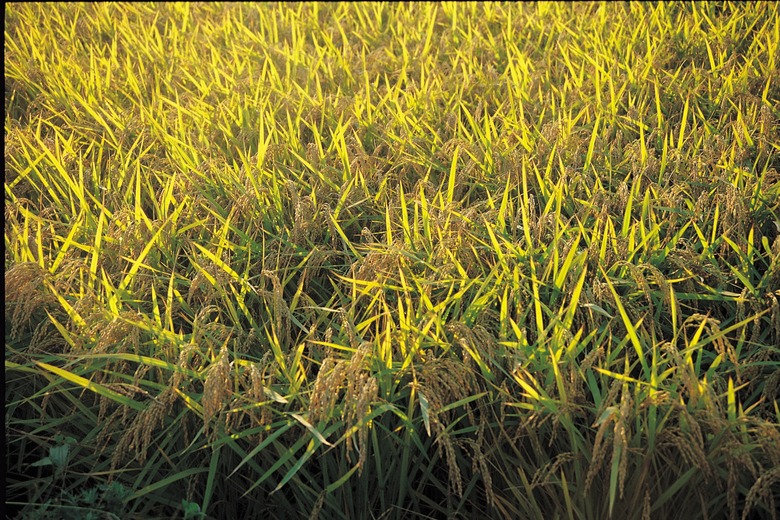What Makes My Grass Blades Turn Yellow?
Yellow grass blades throughout your turf may be the result of any number of pests or diseases attacking your lawn. Like other plants, though, grass is also susceptible to any number of stressors that may affect its color. Properly fertilizing, watering and irrigating your lawn can help protect you from most diseases and pests.
Fungi
Several fungal diseases can cause your lawn to start turning yellow before dying out or turning other colors. Common fungal diseases include dollar spot, powdery mildew and rust. While each of these fungal diseases have their own characteristics, yellowing blades are a symptom of all. These diseases are often localized within your lawn. Cultural control can help take care of all of these problems, although you may need fungicides if the problem is severe. Correctly watering and fertilizing are both important in keeping your lawn free of these diseases.
- Yellow grass blades throughout your turf may be the result of any number of pests or diseases attacking your lawn.
- Correctly watering and fertilizing are both important in keeping your lawn free of these diseases.
Insects, Mites and Nematodes
Many insects and insect larvae feed on the roots of grass or the blades at soil level. This continuous feeding can produce yellowing and dying lawns, generally in localized areas. Several scarab beetles (the family that houses Japanese beetles, May beetles and June bugs) lay their eggs in the soil and the larvae feed upon the turf near the surface. Oftentimes, you can "roll back" a damaged section of turf from the edge of the problem and find the grubs feeding.
Other pests of turf include caterpillars, mites and chinch bugs. Many mites are host-specific, such as the bermudagrass mite which only feeds on Bermuda grass. Several insecticides are on the market for use against turf pests; choose wisely and use appropriately as insecticides are toxic.
- Many insects and insect larvae feed on the roots of grass or the blades at soil level.
- Several scarab beetles (the family that houses Japanese beetles, May beetles and June bugs) lay their eggs in the soil and the larvae feed upon the turf near the surface.
Dogs
If you have a dog, chances are you've noticed the yellow spots where the dog frequently urinates. These yellow patches of turf are often surrounded by lush grass growth. The excessive salts in the urine begin to kill the grass slowly; the grass starts to yellow and eventually may die out completely, leaving bare patches. Watering down the areas where your dog frequently urinates can help wash out the excessive salts and allow your grass to recover.
Other Issues
Especially during summertime droughts, yellowing grass may simply be from the lack of water. Grass may start yellowing into a straw-like color, become "crunchy" or "crispy" and create an unsightly patch of brown over time. While you can water your lawn to make it green again, this is often a waste of valuable water. Your grass may also experience chlorosis, an iron deficiency that leads to yellowing.
- If you have a dog, chances are you've noticed the yellow spots where the dog frequently urinates.
- Watering down the areas where your dog frequently urinates can help wash out the excessive salts and allow your grass to recover.
